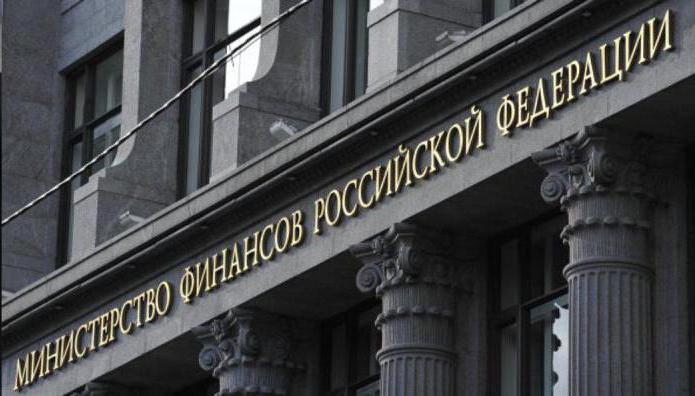The Russian public capital management system provides for the operation of a very wide range of various institutions. Among them are budget funds. Now their role in the development of the financial system of Russia is considered not the most significant, but the experience of solving various social problems by these structures is interesting and can be used to improve the current model of public capital management. What are the features of budget funds? What tasks do they solve?

What are state funds?
In the Russian state financial system, there are 3 main types of institutions that carry out various capital transactions in the interests of the country - budget (also referred to as trust), extrabudgetary funds, as well as specialized departments. There are also local funds budgetary institutions - they most often mean special accounts, which take into account the financial resources allocated by the organization for certain needs.
Budgetary and extrabudgetary structures: similarities and differences
But what is the specificity of precisely those organizations in question?
In the legislation of the Russian Federation the concept of "budget funds" was enshrined in 1995. The corresponding status received some organizations that were previously extrabudgetary. Their transformation into a new type of institution was associated with the need to optimize the mechanisms of targeted financing of certain state expenditures.

Budget and extrabudgetary funds are united by the fact that both types of organizations use public funds. In addition, the expense items of both types of institutions are predominantly targeted. From the point of view of the structure and basic principles of management, budget funds and extrabudgetary organizations are also quite close.
However, institutions of this type are characterized by some distinctive features:
- subordination and accountability to state authorities;
- a limited range of powers regarding the use of capital for purposes not related to the activities of the institution.
Thus, the funds in question are called upon to ensure the effective implementation of state programs of budget support for various spheres, the main criteria of which are:
- maximum compliance of spending directions with the target priorities of the authorities;
- transparency of financial transactions.
In turn, extra-budgetary funds are characterized by significantly greater autonomy than the institutions under consideration in terms of capital management. The relevant management organizations also make key management decisions on their own.
Advantages and disadvantages of budget funds
If we compare the budget and extra-budgetary funds - which of them can be considered more effective in terms of public capital management? The opinions of experts regarding this issue are very mixed.
There is a point of view according to which targeted budget funds make it possible to organize the distribution of state funds so that their incorrect spending can be minimized - because they are directly accountable to the authorities. In turn, according to some experts, extrabudgetary structures, due to their greater autonomy, can manage state capital less efficiently and not so transparently.
But there is an opposite point of view, according to which extra-budgetary institutions, as autonomous structures, can be regulated and controlled at the legislative level much more stringently than budget funds. In turn, overly strict regulation of the activities of the organizations in question can lead to a slowdown in capital investment for state needs, delays in the implementation of certain programs.
Thus, in the activities of budget funds one can find both advantages and disadvantages - from the point of view of the efficient use of public funds. The indisputable advantages of the respective structures are rightfully attributed to the complete controllability of money capital, so that misuse of funds is minimized. In addition, the use of the budget fund by the state implies a direct influence of the authorities on the adoption by this institution of decisions in terms of management and personnel policy.

At the same time, excessive interference of the authorities in the activities of the structures under consideration, used as an instrument for monitoring the utilization of funds, can significantly reduce the effectiveness of the implementation of funded state programs. In this case, budget funds may be inferior in efficiency to extrabudgetary funds, despite the fact that the latter are more autonomous and are not so actively controlled by the authorities.
What trust funds operate in Russia?
Consider examples of really functioning targeted budget funds in the Russian Federation. First of all, it is worth noting that the structures in question played a key role in the socio-economic development of Russia in the past - they were mainly established and involved in order to implement budget programs in the 90s.
Among the most famous modern structures can be identified, for example, the Federal Road Fund. It was established in 2011. Besides him, were also established road funds in the regions. What tasks are assigned to the relevant organization?
The system of budget funds established at the level of road departments is designed to solve the problems associated with the implementation of the transition to the costs of maintaining highways in the Russian Federation in accordance with the standards introduced by the Russian government. The fund should ensure the efficient development of budget funds provided by the state for the construction and repair of roads. In this case, we are talking about hundreds of billions of rubles that require efficient distribution.
With the direct participation of the federal road fund and regional structures, it is planned to implement several large-scale targeted programs related to modernization transport system of the Russian Federation, the development of infrastructure in the constituent entities of the Russian Federation located in the Far East, the South of Russia and other regions where investment in the road sector is required.
The government of the Russian Federation had previously established budgetary financial funds whose competence was financing the development of various tasks - environmental protection, the development of the customs system, and the management of mineral resources. Most of the structures of the corresponding type are now abolished. The main part of the powers of budget funds is distributed among the current authorities. In turn, several major extrabudgetary funds are currently operating in the Russian Federation. It will be useful to consider their specifics in more detail.
Extra-budgetary funds of the Russian Federation
So, we noted above that targeted budget funds are mostly historical organizations. Now there are very few large institutions of the corresponding type in Russia. But large-scale extrabudgetary organizations in the public finance system in the Russian Federation are very active. First of all, we are talking about such structures as PFR, FSS and FFOMS. What are their specifics?
FIU
The Pension Fund of Russia, or PFR, is the largest extrabudgetary structure with the competence to manage the state pension system. The FIU performs the following key functions:
- granting pensions to citizens and ensuring their timely payments;
- organization of cash accounting in the framework of pension insurance;
- transfer of social benefits to various categories of citizens;
- personified registration of citizens;
- interaction with participants in insurance programs, employers;
- collection of arrears of contributions;
- issuance to citizens of certificates for the payment of maternity capital;
- ensuring the transfer of relevant funds;
- implementation of state co-financing of pensions;
- management of funds received from participants in the social and medical insurance system;
- implementation of social support measures established by the legislation of the Russian Federation.
FSS
The other largest off-budget fund of the Russian Federation - the FSS - is engaged in:
- the implementation of insurance programs of citizens;
- payment of sick leave to the working population;
- transfer of benefits for pregnancy and childcare;
- transfer of funds by birth certificates;
- implementation of social programs established by law.
FFOMS
The main functions of the other largest fund - FFOMS - are as follows:
- managing the activities of territorial insurance funds under various state programs;
- the allocation of funds for the implementation of targeted programs related to the health insurance system;
- control over the effective spending of funds in the framework of relevant programs.
Prospects for budget funds in Russia
How promising is it to form budget financial funds of the Russian Federation in the future? In order to answer this question, it makes sense to study in more detail the facts from the history of the development of relevant organizations in Russia.
For the first time, the status of the organizations in question was enshrined in the budget legislation of the Russian Federation, as we noted above, in the mid-90s. At the same time, both federal budget funds and regional ones were established. Gradually, the functions of both began to be transferred to the level of various departments. This was due to the fact that prioritization in solving various socio-economic problems passed into the exclusive competence of the relevant structures. As a result, it was necessary to redistribute powers in terms of financing various projects.
Thus, the budget funds of the Russian Federation for the most part transferred functions related to the investment of state finances to departments. According to many experts, the effectiveness of the use of funds from the fact that the authority to use them passed to government agencies did not increase too much - you could leave them at the level of the funds in question. Moreover, noticeable difficulties began to be observed in the efficiency of budget utilization in the course of solving various socio-economic problems.
So, public finances generated from certain taxes and fees were not always effectively distributed across regional budgets. In addition, agencies that began to perform the functions of budget funds often did not quite efficiently invest in areas that directly determined the development prospects of the largest industries. Thus, at the beginning of 2000, experts attribute under-financing of exploration activities to the most noticeable problems, as a result of which the growth rate of oil reserves has significantly decreased, as well as budget revenues. There were discussions on the subject of the need to re-establish, in particular, a fund responsible for the reproduction of mineral resources. But its characteristic functions continued to be performed by government departments.
In order to better understand the specifics of the work of institutions such as state budget funds, it will be useful to consider the features of some of them. Among the most famous and significant organizations of the corresponding type, which previously operated in the budget system of the Russian Federation at the federal level, is the very Fund with the competence to develop mineral resources.
Historical experience: fund for the development of the mineral resource base
The organization in question was established in August 1997 in accordance with the Law on the Federal Budget of the Russian Federation. The funds of the corresponding fund should have been spent in order to solve the problems associated with maintaining the necessary level of the mineral resource base of the state, including geological exploration of mineral resources. Financing of the organization in question was carried out through special contributions to the federal budget of the Russian Federation, made by the subjects of subsoil use - most often by mining companies that were explored with state funding.
The formation, as well as the distribution of the fund’s funds, was regulated by separate federal laws. The corresponding state capital was intended. He could not be seized, used for commercial purposes. Its distribution should have been carried out in accordance with the priorities established at the level of the budget legislation of the Russian Federation. Accounting for funds held by the fund was carried out by the Federal Treasury. This area of activity of the relevant structure was regulated by separate regulatory acts of the Ministry of Finance of the Russian Federation. Operations with the fund’s capital were to be carried out only with the mediation of the Treasury and the Central Bank of the Russian Federation.

Those funds of the fund that were not disbursed according to the plan in the reporting year were subsequently credited to the organization’s income in the formation of state capital under the management of the fund in the next year. The distribution of these volumes of funds was carried out by the Ministry of Natural Resources of the Russian Federation in coordination with the Ministry of Economy of Russia. In addition, the Ministry of Natural Resources had the right to manage the funds of the fund - within the limits approved by the Ministry of Finance of the Russian Federation. Which, in turn, was the main subject of control over the expenditure of state capital held by the fund in question.
Historical experience: regional funds
Experience in the establishment of budget funds existed in the regions of the Russian Federation. In particular, in Moscow.
So, in the early 2000s, the authorities of the Russian capital established funds for the development of territories. Their specifics consisted in the fact that the funds held by the relevant structures should be spent in accordance with estimates, calculations and contracts. At the same time, in the course of budget execution, the necessary adjustments could be fixed in the main estimate of income and expenses - with the participation of the main manager of the institution. This could be due to a change in priorities in budget financing determined by the city authorities.
Control that the estimate was executed correctly was carried out by the main manager, as well as other authorized structures. As in the case of the federal fund discussed above, cash in the metropolitan organizations under consideration remaining after the last financial year could be carried over to the next.
Thus, the experience of transferring the authority to manage public finances in the Russian Federation was available both at the federal level of government and at the regional level. But, one way or another, now the system of state budget funds plays a much less important role than in past historical periods.Although, according to many analysts, the effectiveness of capital management in the respective funds may be in no way inferior to the one that characterizes the activities of departments in whose jurisdiction is solving such problems now. It is quite possible to delegate certain functions of managing and distributing public finances to the respective funds, which are presented in a wider spectrum than at the current stage of development of the budget system of Russia in the future.
Summary
So, we examined what the state budget, extra-budgetary funds do. Institutions of the first type solve problems associated with the development of areas that can be attributed to the largest in terms of funding and most significant for the socio-economic development of the state - such as, for example, road construction.
The establishment of budget funds in order to distribute state capital may be more promising in cases where it is not necessary to tighten control over the activities of the relevant organizations - due to the transparency and accessibility of regulation of financial transactions carried out by these funds.
In turn, in extrabudgetary institutions, cash transactions may be less transparent and controlled - but even with tightening state regulation, the efficiency of capital development and the efficiency of solving socio-economic problems in the respective funds usually do not decrease.
The formation of budget funds in the Russian Federation was carried out mainly in the 90s - that is, at an early stage in the development of the public finance management system in Russia. Gradually, the functions of these institutions were transferred primarily to the level of existing authorities. In turn, large extrabudgetary funds are currently operating in the Russian Federation, which solve the most important socio-economic problems.






